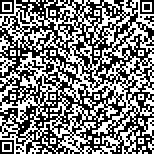1.National Experimental Teaching Demonstration Center of Plant Science/ College of Agriculture,Guangxi University,Nanning 530004,China;2.Guangxi South Subtropical Agricultural Research Institute,Chongzuo 532415,China;3.Guangxi Key Laboratory of Beibu Gulf Marine Biodiversity Conservation, College of Marine Sciences,Beibu Gulf University,Qinzhou 535011,China
S641.2
Get Citation
覃欣仪,何丽珍,肖可卓,庞师婵,宋静静,杨尚东. Effects of different associated crops on endophytic microbial community structure in tomato roots[J]. Jorunal of Huazhong Agricultural University,2024,43(1):31-39.
CopyRelated Videos
Share
Article Metrics
- Abstract:
- PDF:
- HTML:
- Cited by:
History
- Received:September 06,2022
- Revised:
- Adopted:
- Online: January 30,2024
- Published:
Article QR Code
